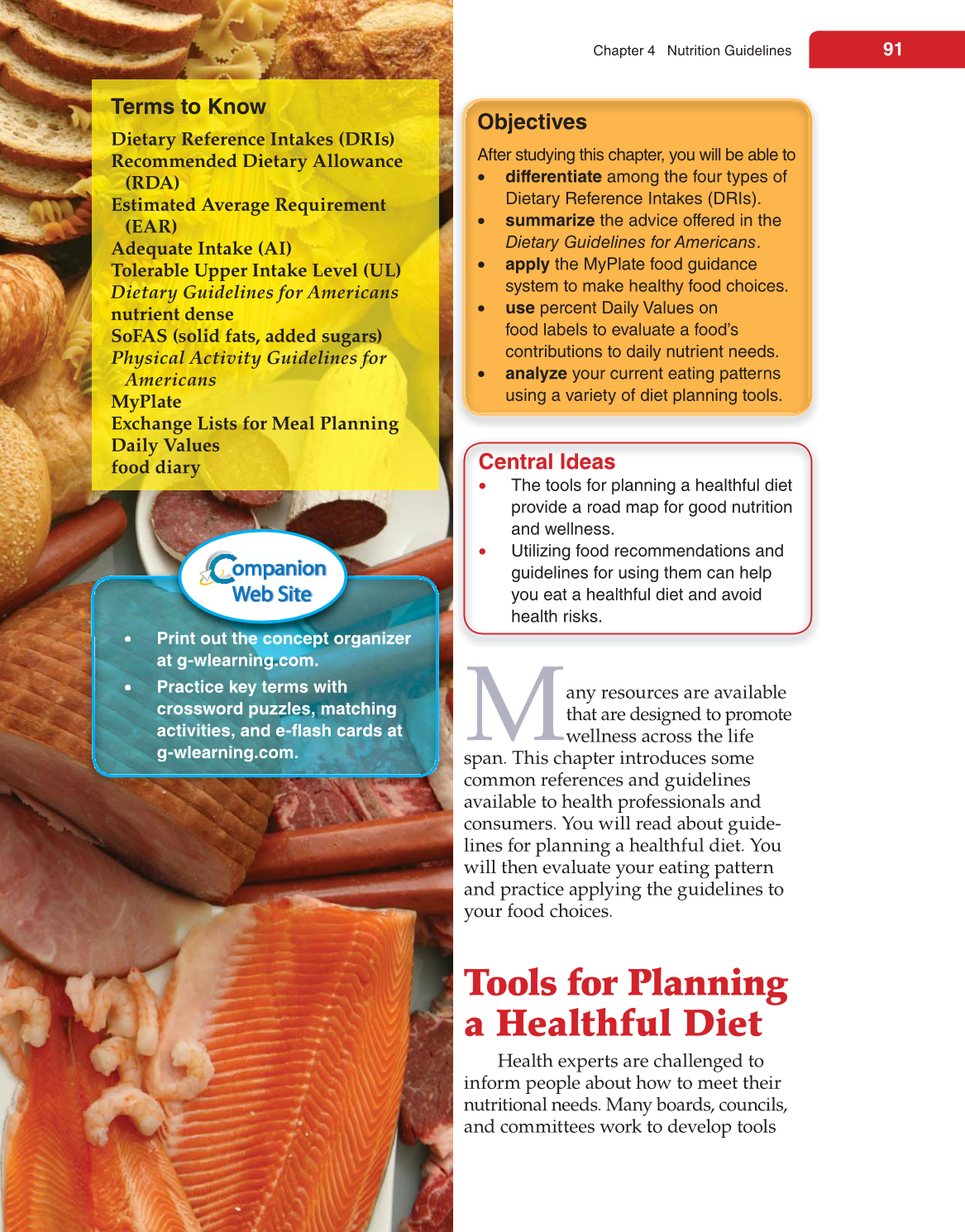Chapter 4 Nutrition Guidelines
91
Terms to Know
Dietary Reference Intakes (DRIs)
Recommended Dietary Allowance
(RDA)
Estimated Average Requirement
(EAR)
Adequate Intake (AI)
Tolerable Upper Intake Level (UL)
Dietary Guidelines for Americans
nutrient dense
SoFAS (solid fats, added sugars)
Physical Activity Guidelines for
Americans
MyPlate
Exchange Lists for Meal Planning
Daily Values
food diary
• Print out the concept
at g-wlearning.com..com.g-wlearning
• Practice key terms with
crossword puzzles, matching
activities, and e-flash cards at
g-wlearning.com.
• Print out the concept organizer
at
• Practice key terms with
crossword puzzles, matchin g
activities , and e-flash cards at
g-wlearning.com.
rint ou t th h h th th e e con co nc ept orgorganizer
ompanion ompanion
Web Site Web Site
Objectives
After studying this chapter, you will be able to
• differentiate among the four types of
Dietary Reference Intakes (DRIs).
• summarize the advice offered in the
Dietary Guidelines for Americans.
• apply the MyPlate food guidance
system to make healthy food choices.
• use percent Daily Values on
food labels to evaluate a food’s
contributions to daily nutrient needs.
• analyze your current eating patterns
using a variety of diet planning tools.
Central Ideas
• The tools for planning a healthful diet
provide a road map for good nutrition
and wellness.
• Utilizing food recommendations and
guidelines for using them can help
you eat a healthful diet and avoid
health risks.
Mwellness M
any resources are available
that are designed to promote
across the life
span. This chapter introduces some
common references and guidelines
available to health professionals and
consumers. You will read about guide-
lines for planning a healthful diet. You
will then evaluate your eating pattern
and practice applying the guidelines to
your food choices.
Tools for Planning
a Healthful Diet
Health experts are challenged to
inform people about how to meet their
nutritional needs. Many boards, councils,
and committees work to develop tools
